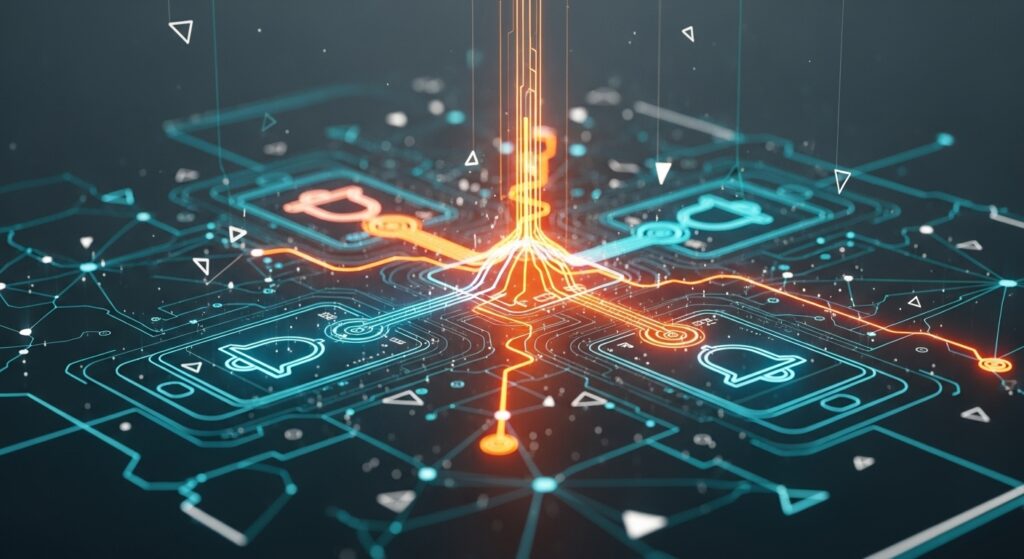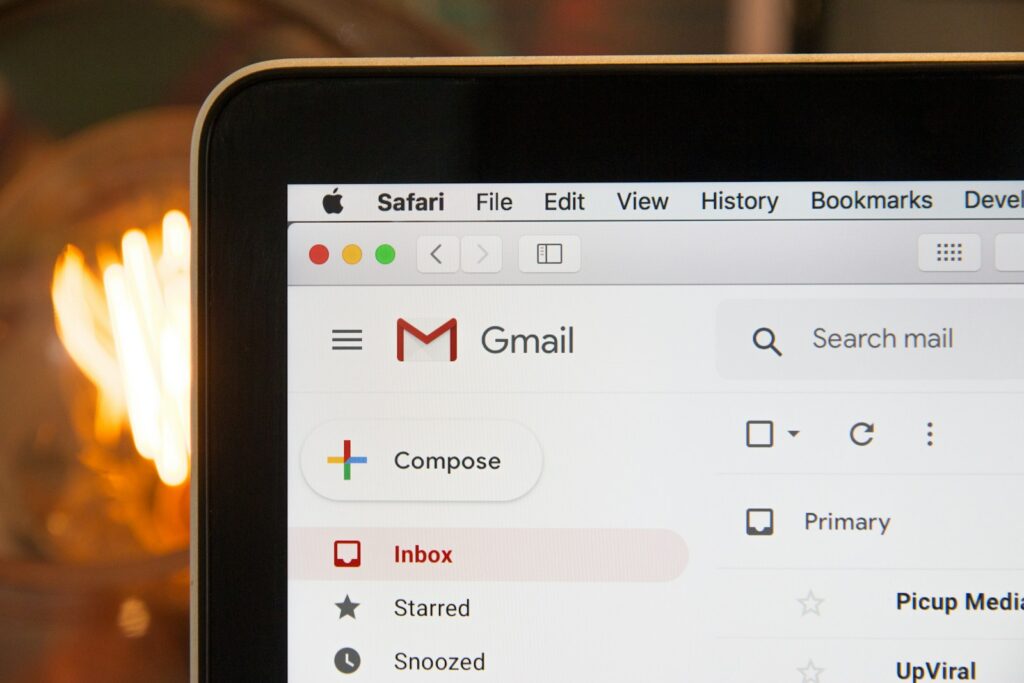The insistent ping. The subtle vibrate. The little red number ballooning in the corner of your screen. It calls to you, doesn’t it? Even when you’re off the clock, tucked into bed, or enjoying a hard-earned weekend, that invisible magnet pulls your fingers towards your phone, towards your laptop, towards the digital gateway to your professional life: the work email inbox.
You tell yourself, “Just a quick peek.” “Maybe something urgent came in.” “What if I missed something crucial?” Before you know it, five minutes have turned into fifteen, and your mental energy is already being siphoned away, long after you’ve officially “signed off.” If this scenario sounds painfully familiar, you’re not alone. Millions around the globe struggle with constant email checking, a pervasive modern habit that often feels less like a choice and more like an uncontrollable compulsion.
But why can't stop checking work emails? Is it simply a lack of discipline? A sign of work email addiction? Or is there a deeper, more insidious force at play, weaving together psychology, technology, and organizational culture into a complex web that keeps us perpetually tethered to our inboxes?
This extensive deep dive will peel back the layers, moving beyond the superficial “just stop doing it” advice. We’ll explore the real, often subconscious, reasons behind our inability to disconnect, dissecting the psychological hooks, the technological enablers, and the societal pressures that fuel this behavior. More importantly, we’ll equip you with actionable insights and strategies on how to stop checking work emails, reclaim your time, and restore a healthier work-life balance emails in an increasingly “always-on” world.
The Deeper Roots: Why We’re Constantly Tethered to Our Inboxes
The Psychological Hooks: What Makes Email So Addictive?
At its core, our relationship with work email is deeply psychological. It taps into primal human needs and vulnerabilities, creating a feedback loop that is incredibly hard to break. Understanding the email checking psychology is crucial to dismantling its hold.
The Dopamine Hit and Variable Rewards
Imagine a slot machine. You pull the lever, and most of the time, nothing happens. But every now and then, the bells and whistles go off, and you hit a jackpot. That unpredictable, intermittent reward is incredibly addictive. Our email inbox operates on a very similar principle.
Each time you check your email, you’re engaging in a mini-gamble. Most of the time, it’s junk, CCs you don’t need, or routine updates. But occasionally, there’s a “win”: an important piece of information, a compliment from a client, an exciting new project, a problem solved, or even just the satisfaction of deleting a batch of old messages. This variable reward schedule is profoundly effective at cementing habits. Our brains release dopamine, a neurotransmitter associated with pleasure and motivation, in anticipation of a reward. The uncertainty of that reward makes the behavior even more compelling.
“The brain gets a hit of dopamine not from the reward itself, but from the anticipation of the reward. Email checking provides that constant possibility of something interesting or important, triggering a continuous loop of seeking behavior.”
— Dr. Anna Lembke, author of “Dopamine Nation” (paraphrased)
This constant anticipation is a primary driver of work email addiction, making it incredibly difficult to resist the urge to peek, even when you know you should be focused elsewhere.
Fear of Missing Out (FOMO) & Anxiety
Another powerful psychological trigger is the Fear of Missing Out (FOMO). In a professional context, this translates to the anxiety that something critical might happen, be decided, or be discussed without your input.
- Missing Opportunities: What if a new project or client opportunity is announced, and you’re slow to respond?
- Being Out of the Loop: What if important team decisions are made, and you’re unaware?
- Appearing Unresponsive: What if a client or manager needs an urgent reply, and your delay reflects poorly on your commitment?
This anxiety fuels the constant email checking. We check not just for the potential reward, but to alleviate the discomfort of uncertainty. It’s a defensive mechanism, a way to stay “in the know” and protect our professional standing. This constant low-level anxiety can contribute significantly to mental fatigue and stress, ironically making us less productive overall. According to the American Psychological Association, technology and the “always-on” culture are significant contributors to workplace stress.
The Illusion of Productivity
For many, checking emails feels like doing work. It’s an easily quantifiable activity. You see the number of unread messages decrease, you send replies, you mark things as done. This provides an immediate, tangible sense of accomplishment, a small hit of validation.
However, this is often an illusion. While some emails are indeed productive, much of the time spent in the inbox is on administrative tasks, reading irrelevant messages, or engaging in context-switching that drains cognitive resources without contributing to deep, meaningful work. Switching between tasks, even small ones like email, can cost up to 23 minutes to regain full focus on the original task, as noted in studies on multitasking. This “productive busy-ness” can mask a lack of actual progress on core responsibilities, further fueling why can't stop checking work emails as a default activity.
The Need for Validation and Control
In an environment where responsiveness is often equated with diligence and competence, quick email replies become a source of validation. Receiving a “thanks for the quick response” can be surprisingly gratifying. It affirms our value, our commitment, and our ability to keep things moving. This desire for external validation often overrides our best intentions to disconnect.
Moreover, the inbox can represent a small sphere of control in a often chaotic work environment. Managing emails, clearing the inbox, and responding promptly can give us a sense of mastery and order, even when other aspects of our job feel overwhelming. This perceived control can become another subtle psychological anchor.
The Digital Chains: How Technology & Structure Enable Constant Checking
Beyond individual psychology, the very architecture of our digital lives and the way organizations are structured play a massive role in our constant email checking habits. Technology, while offering unparalleled convenience, has also inadvertently forged new chains.
Ubiquitous Access & Push Notifications
The advent of smartphones and pervasive Wi-Fi has transformed email from a desktop-bound activity into a constant companion. We carry our inboxes in our pockets, on our wrists, and even on our bedside tables.
- Smartphones & Tablets: Instant access, anytime, anywhere.
- Smartwatches: Notifications flash directly onto your wrist, making it almost impossible to ignore.
- Desktop & Laptop Notifications: Banners, sounds, and pop-ups constantly vie for your attention.
These push notifications are designed to be intrusive. They bypass our conscious decision-making, grabbing our attention whether we want them to or not. Each notification acts as a micro-interruption, a tiny prompt to check, reinforcing the dopamine loop. This relentless assault on our focus makes digital boundaries work incredibly challenging. Our devices, intended to serve us, often end up controlling us.
The Always-On Culture
Many modern workplaces, especially those with remote teams, global operations, or client-facing roles, have inadvertently fostered an “always-on” culture. The expectation, unspoken or explicit, is that employees should be available and responsive outside of traditional working hours.
- Global Teams: Different time zones mean someone is always working, creating pressure to be available across borders.
- Remote Work: The lines between home and office blur, making it harder to mentally or physically disconnect.
- Client Expectations: Clients often expect immediate responses, driven by their own “always-on” environments.
This cultural norm means that why can't stop checking work emails becomes less about individual failing and more about systemic pressure. We check because we feel we have to, lest we be seen as uncommitted or slow. This constant pressure significantly erodes work-life balance emails.
Email as the Default Communication Tool
Despite the proliferation of collaboration tools, email remains the default, often primary, method of communication in many organizations. This over-reliance has several implications:
- High Volume: Everything from critical updates to trivial announcements gets channeled through email, leading to inbox overwhelm.
- Lack of Urgency Cues: Without clear conventions, every email can feel urgent, leading to blanket
constant email checking. - Context Switching: Conversations that could be quicker via chat or a quick call get dragged into lengthy email threads.
Consider the typical communication landscape:
| Communication Tool | Primary Use Case | Implied Urgency | Impact on Email Checking |
|---|---|---|---|
| Formal announcements, detailed discussions | Varies widely | High: Default for everything | |
| Instant Messaging | Quick questions, informal chats, real-time | High | Can reduce email, but introduces new “always-on” pressure |
| Project Management | Task assignment, progress tracking | Medium | Can reduce email, but needs discipline |
| Video Conferencing | Meetings, complex discussions | High (scheduled) | Low direct impact on email checking |
When email serves as the catch-all, it becomes a necessity to check frequently, exacerbating the work email addiction. Effective digital boundaries work often begins with strategically choosing the right communication tool for the job. You can find more strategies on choosing the right tools in our guide to improving workplace communication.
Poor Email Hygiene & Volume
Sometimes, the problem isn’t just our checking habits, but the habits of those we work with. A culture of poor email hygiene can significantly contribute to the overwhelming volume:
- “Reply All” Abuse: Unnecessary recipients are CC’d, leading to irrelevant messages clogging everyone’s inboxes.
- Lack of Clarity: Vague subject lines or poorly structured emails lead to more back-and-forth, increasing overall volume.
- Over-Documentation: Email is used for every minor decision, rather than using other tools or brief verbal communication.
- Internal Spam: Too many company-wide announcements that aren’t critical for everyone.
When your inbox is constantly overflowing with noise, it becomes even harder to discern what’s truly important, reinforcing the need for constant email checking to sift through the clutter.
Organizational & Social Pressures: The Unspoken Rules
Beyond individual habits and technological design, the very fabric of an organization’s culture can dictate the intensity of work email addiction and why can't stop checking work emails. These pressures are often subtle but incredibly powerful.
Leadership by Example (or Lack Thereof)
The tone at the top profoundly influences organizational behavior. If leaders and managers are sending emails at 10 PM, expecting immediate replies on weekends, or constantly checking their own devices during non-work hours, it sets a damaging precedent. Employees, consciously or subconsciously, absorb these cues and feel compelled to emulate the behavior to demonstrate commitment and ambition.
Conversely, leaders who model healthy digital boundaries work—by clearly stating their offline hours, delaying non-urgent emails until business hours, and encouraging team members to disconnect—can create a positive ripple effect. Without this leadership, breaking free from the email chain can feel like an act of rebellion, potentially risking career advancement or perception.
Performance Metrics & Perceived Diligence
In some environments, responsiveness and perceived diligence are implicitly or explicitly tied to performance reviews. An employee who consistently replies quickly, even outside of hours, might be seen as more dedicated or efficient, regardless of the actual quality of their work or their long-term well-being.
- Quick Response Time: Valued over thoughtful, well-considered responses.
- Always Available: Seen as a sign of commitment.
- Visibility: Being seen to be working (i.e., sending emails) outside of hours might be noticed and rewarded.
This creates a perverse incentive system. Even if it’s not explicitly stated, the social contract of the workplace can make it feel necessary to keep constant email checking to maintain a good standing and avoid negative perceptions.
Global Teams and Time Zones
While mentioned as a technological enabler, the existence of global teams also creates a significant social pressure. When collaborators are in different time zones, the workday truly never ends. An email sent from London at 5 PM their time might land in a New York colleague’s inbox at midday, but for a Sydney colleague, it’s 2 AM.
This creates a continuous flow of communication, and the fear of delaying progress or appearing uncooperative can lead individuals to extend their “working hours” into their off-time. The solution isn’t to stop global collaboration, but to build explicit norms and digital boundaries work around cross-timezone communication.
Fear of Consequences
Ultimately, a significant driver behind why can't stop checking work emails is the fear of negative consequences. This could be:
- Missing a Critical Deadline: An urgent client request, a project update, or a key decision.
- Displeasing a Superior: Appearing unresponsive or disengaged.
- Damaging Client Relationships: Not providing timely support or information.
- Slowing Down Team Progress: Being the bottleneck in a workflow.
These fears, whether real or perceived, are powerful motivators. They create a constant low-level stress that keeps us vigilant, perpetually drawn to the inbox to mitigate potential risks.
The Hidden Costs: Impact on Well-being and Productivity
The cumulative effect of work email addiction, constant email checking, and the erosion of digital boundaries work is far more detrimental than simply losing a few minutes of personal time. It creates a vicious cycle that profoundly impacts mental health, focus, and ultimately, true productivity. You can explore this topic further in our guide to understanding digital burnout.
Mental Health Toll: Stress, Burnout, and Anxiety
The constant state of vigilance, the anticipation of notifications, and the pressure to be “always-on” contribute significantly to chronic stress.
- Increased Anxiety: The brain never truly switches off, leading to a persistent state of alertness and worry.
- Emotional Exhaustion: The mental energy expended on managing email notifications, context switching, and emotional labor (responding appropriately) can lead to burnout.
- Difficulty Disconnecting: The inability to mentally detach from work means a constant mental load, even during downtime. This blurs the lines of
work-life balance emailsand prevents genuine rest and recovery. - Sleep Disturbances: Checking emails before bed, or even waking up to check them, interferes with sleep quality, exacerbating fatigue and reducing cognitive function.
Fragmented Focus & Reduced Deep Work
Our brains are not designed for constant multitasking. Every time you switch from a task to check an email, even for a few seconds, it takes a measurable amount of time and cognitive effort to reorient yourself to the original task. This is known as context switching.
- Reduced Concentration:
Constant email checkingshatters periods of focused work into tiny, inefficient fragments. - Lower Quality Output: Deep, complex tasks requiring sustained concentration are particularly vulnerable. It’s difficult to produce high-quality work when your brain is constantly being pulled in different directions.
- Increased Error Rate: Distractions from email can lead to mistakes in other tasks.
What feels like being productive (addressing emails) is often the enemy of actual productivity (doing the work that requires concentrated thought).
Eroding Work-Life Boundaries
Perhaps the most significant long-term impact is the complete erosion of digital boundaries work. When email intrudes into family dinners, weekend excursions, and personal leisure time, the concept of “off the clock” becomes meaningless.
- Personal Relationships Suffer: Family and friends often feel ignored or secondary to work demands.
- Lack of Hobbies & Recreation: Time and mental space for personal interests, exercise, and hobbies diminish, leading to a less fulfilling life.
- No True Downtime: The inability to genuinely relax and recharge means a perpetual state of “on,” leading to chronic fatigue and resentment.
“The addiction to checking emails isn’t just about productivity; it’s about the sacred space of personal time being invaded, leading to a profound sense of never truly being ‘off duty.’ This erosion of boundaries is a silent epidemic impacting mental and emotional health globally.”
— Cal Newport, Author of ‘Deep Work’ (paraphrased)
Sleep Disturbances
The blue light from screens suppresses melatonin production, making it harder to fall asleep. Add to that the mental stimulation and potential anxiety from reading work emails, and you have a recipe for sleep deprivation. Checking emails just before bed, or worse, during the night, severely impacts sleep quality, which has cascading negative effects on mood, cognitive function, and physical health the next day. This constant disruption further fuels why can't stop checking work emails due to impaired decision-making and increased susceptibility to distraction when tired.
Key Takeaways: Understanding the Email Paradox
- It’s Not Just a Bad Habit: The Deeper Roots: Our compulsive
constant email checkingis often driven by a complex interplay of psychological triggers (dopamine, FOMO, perceived productivity), technological enablers (ubiquitous access, notifications), and deeply ingrained organizational cultures that reward “always-on” availability. - The Vicious Cycle of Reward and Anxiety: Email checking provides a variable reward (the occasional important message, validation) which mimics gambling, fueling
work email addiction. Simultaneously, the fear of missing out (FOMO) or appearing unresponsive creates anxiety, compelling us to check even when we know we shouldn’t. - Eroding Boundaries & Well-being: The inability to disconnect from
work-life balance emailsleads to fragmented focus, reduced deep work, increased stress, burnout, and significantly blursdigital boundaries work, impacting mental health and personal relationships. - Solutions Require Multi-Faceted Approach: Simply “trying harder” to stop checking rarely works. Effective strategies involve setting clear
digital boundaries work, changing personal habits, re-evaluating communication methods, and advocating for a healthier, more intentional workplace culture regarding email expectations. - Reclaiming Control is Possible: Understanding the
email checking psychologybehind your urges is the first step. By implementing conscious strategies, communicating expectations, and challenging the “always-on” mindset, you can regain control over your inbox and your life.
Reclaiming Control: Practical Strategies and Mindset Shifts
Understanding the problem is the first step, but the real power lies in implementing solutions. Breaking free from work email addiction requires a multi-faceted approach, tackling personal habits, technological defaults, and advocating for cultural change. Here’s how to stop checking work email and reclaim your peace.
Reclaiming Your Time: Establishing Digital Boundaries
The most immediate and impactful changes you can make revolve around establishing robust digital boundaries.
- Schedule Dedicated Email Checking Times:
- Action: Instead of constantly checking, designate 2-3 specific times during your workday to process emails (e.g., 9:00 AM, 1:00 PM, 4:00 PM).
- Benefit: This trains your brain to expect email only at certain times, reducing the urge to check impulsively. It also allows for focused work in between.
- Pro-Tip: Communicate these times to your team and clients. An auto-reply could state: “I check emails at 9 AM, 1 PM, and 4 PM EST and will respond accordingly.”
- Turn Off Notifications – All of Them:
- Action: Disable all push notifications for email on your phone, desktop, and smartwatch.
- Benefit: Eliminates the constant visual and auditory cues that trigger
constant email checking. You regain control over when you engage with your inbox. - Settings: Go into your device’s notification settings and turn off banners, sounds, and badge icons for your work email app.
- Create “No Email Zones” and Times:
- Action: Define periods where you absolutely do not check work email. This could be evenings after 6 PM, weekends, or during specific focus blocks.
- Benefit: Reinforces
digital boundaries workand allows for genuine disconnection and recovery, vital for yourwork-life balance emails. - Implementation: Physically remove your phone from your bedroom at night. Don’t open your laptop after dinner. Use “Do Not Disturb” modes.
- Utilize “Away” Messages Strategically:
- Action: Beyond vacation, consider using away messages for periods of deep work, or even during your designated “no email” times.
- Message Example: “Thank you for your email. I am currently focused on a project and will respond during my next email check at [Time]. For urgent matters, please contact [Colleague’s Name] at [Phone Number/Email].”
- Benefit: Manages expectations and provides a clear alternative for true emergencies, alleviating FOMO.
Cultivating Intentional Communication
Beyond your personal habits, influencing how you and your team communicate can drastically reduce email volume and urgency.
- Choose the Right Tool for the Job:
- Action: Before sending an email, ask: Is this best handled by email, or would a quick chat (Slack, Teams, etc.), a phone call, or a project management comment be more efficient?
- Email: For formal communication, documentation, non-urgent information sharing, or external communication.
- Chat: For quick questions, informal updates, and real-time collaboration.
- Project Management Tools: For task-specific discussions, progress updates, and file sharing related to projects.
- Benefit: Reduces unnecessary email traffic and ensures more efficient communication, directly addressing
why can't stop checking work emailsdue to volume.
- Train Colleagues and Clients on Your Availability:
- Action: Be proactive in setting expectations. Communicate your email checking schedule (see above).
- Benefit: You’re not just setting boundaries for yourself, but gently guiding others to respect them.
- Example: In a project kick-off, state: “My standard response time for emails is within 24 business hours. For urgent items, please call me directly or message me on [Chat Tool].”
- Master the Art of Concise and Clear Emails:
- Action: Write emails that are to the point, clearly stating the purpose, required action, and deadline. Use bullet points.
- Benefit: Reduces back-and-forth, follow-up questions, and ensures clarity, cutting down on the overall email volume and mental load.
Addressing the Psychological Roots of Email Urges
Since email checking psychology is a major factor, actively working on your mindset is key.
- Practice Mindfulness and Self-Awareness:
- Action: When you feel the urge to check email outside your scheduled times, pause. Acknowledge the urge without judgment. Ask yourself: “Why do I feel compelled to check right now? Is it truly urgent, or is it FOMO/habit?”
- Benefit: Interrupts the automatic behavior pattern and helps you identify the underlying psychological triggers of
work email addiction. - Technique: Take a few deep breaths. Remind yourself that the world won’t end if you don’t check immediately.
- Challenge FOMO and the Illusion of Productivity:
- Action: Actively question the belief that you’re missing out or that checking email equals productivity.
- Reflection: How many truly “urgent” emails have you received after hours that couldn’t wait? How much deep, meaningful work have you accomplished during your email-free blocks?
- Benefit: Debunks the myths that fuel
constant email checking, empowering you to trust your boundaries.
- Seek Support If
Work Email Addictionis Severe:- Action: If your email checking habit feels truly uncontrollable, is causing significant distress, and impacting your personal life, consider seeking help from a therapist or coach specializing in digital well-being.
- Benefit: Professional guidance can provide personalized strategies and support for overcoming addictive behaviors.
Advocating for Cultural Change in the Workplace
While personal changes are vital, lasting freedom often requires collective effort and cultural shifts within organizations.
- Lead by Example:
- Action: If you are in a leadership position, or even just a team member, start implementing these
digital boundaries workstrategies yourself. Don’t send emails after hours. Delay sending until business hours. - Benefit: Shows others that it’s permissible and even encouraged to disconnect, fostering a healthier
work-life balance emailsculture.
- Action: If you are in a leadership position, or even just a team member, start implementing these
- Discuss Expectations with Teams and Management:
- Action: Initiate conversations about email response expectations, after-hours communication, and the impact of “always-on” culture on well-being and productivity.
- Benefit: Creates a shared understanding and opens the door for collective agreements and policy changes.
- Topics: Discuss designated “no email” days/times for the team, or a shared understanding of what constitutes an “urgent” communication that warrants an after-hours message.
- Promote a Healthy
Work-Life Balance EmailsCulture:- Action: Encourage and celebrate actual disconnection. Promote activities outside of work. Advocate for policies that support employee well-being over constant availability.
- Benefit: Shifts the focus from perceived busyness to genuine output and sustainable employee health, ultimately benefiting both individuals and the organization.
Conclusion: Reclaiming Your Inbox, Reclaiming Your Life
The pull of the work email inbox is undeniably powerful, a siren song that promises connection, urgency, and the illusion of productivity. We’ve seen that why can't stop checking work emails is not a simple question with a simple answer. It’s a complex tapestry woven from our intrinsic psychological wiring (the dopamine hit, FOMO, the need for validation), the pervasive technological landscape (smartphones, notifications), and the often unspoken, sometimes explicit, demands of organizational culture (always-on expectations, leadership by example). This confluence creates a perfect storm for work email addiction, eroding digital boundaries work and undermining work-life balance emails.
However, understanding this intricate web is the first, most crucial step towards dismantling it. By recognizing the email checking psychology at play, acknowledging the technological enablers, and identifying the cultural pressures, we move beyond self-blame and towards empowering solutions.
The journey to break free from constant email checking isn’t about ignoring your responsibilities; it’s about intentionality. It’s about taking back control from a system designed to keep you perpetually engaged. It’s about prioritizing deep work over shallow busy-ness, true rest over constant vigilance, and genuine connection over fragmented digital interactions.
The strategies we’ve outlined, from scheduling email times and disabling notifications to advocating for cultural shifts and addressing the psychological roots of your urges, provide a robust roadmap. They empower you to redefine your relationship with your inbox, transforming it from a source of constant anxiety into a tool that serves your productivity and well-being, rather than dictating it.
Take Action: Start Your Digital Boundary Journey Today
You now have the insights and the tools. The “real reason” you can’t stop checking work emails is multi-layered, but so are the solutions. The power to change this pattern lies within your grasp.
Which of these strategies will you implement first?
- Commit to scheduling your email checks for specific times today.
- Turn off one email notification right now on your most distracting device.
- Have a conversation with a colleague about setting better
digital boundaries work.
Don’t let the inbox control your life. Take a stand for your focus, your well-being, and your work-life balance emails.










